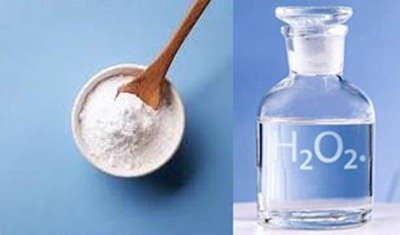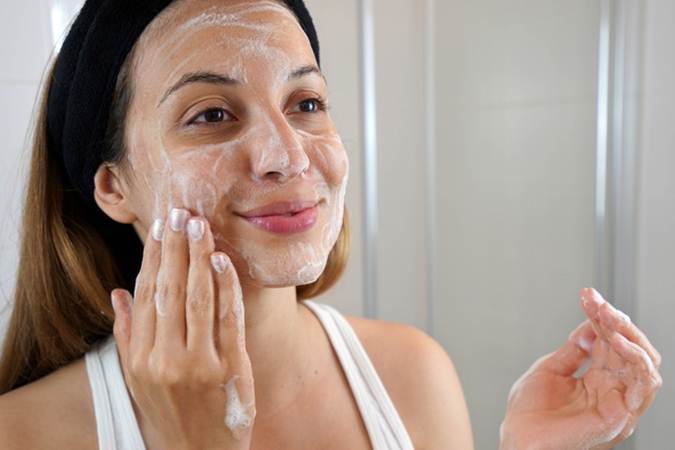In the world of skincare, natural remedies have gained immens popularity for their potential to address various skin concerns. One such combination that has sparked interest is combining baking soda and hydrogen peroxide for skin whitening. This duo is believed to offer synergistic benefits that promote a brighter complexion. However, before diving into this skincare approach, it’s vital to understand the science behind it, the benefits it claims to offer, as well as the possible risks and considerations.
The Science Behind Baking Soda and Hydrogen Peroxide
Sodium bicarbonate, or baking soda, is a mild abrasive agent frequently used for exfoliation. When mixed with water or other liquids, it forms a paste that can help unclog pores, remove dead skin cells, and potentially reveal a more radiant skin layer.
On the other hand, hydrogen peroxide, is a chemical compound known for its bleaching properties. It can lighten pigmentation, including dark spots, which is why it’s usually used to even out skin tone.
Benefits of Mixing Baking Soda and Hydrogen Peroxide for Skin Whitening
- Hyperpigmentation Reduction: Hydrogen peroxide’s ability to lighten areas of hyperpigmentation and dark spots can result in a more uniform skin tone over time.
- Brightening and Exfoliation: The combination of hydrogen peroxide and baking soda can provide a dual-action effect. While hydrogen peroxide’s bleaching action can target pigmented areas, exfoliating properties of baking soda help slough off dull and dead skin cells, leading to a potentially more even and brighter complexion.
- Pore Cleansing: Gentle abrasiveness of baking soda can aid in removing impurities from pores, contributing to a smoother and clearer skin texture.
Recommended method of using baking soda and hydrogen peroxide for skin whitening?
Especially if you have problematic or sensitive skin, it’s important to consult a dermatologist or medical professional before trying baking soda, hydrogen peroxide or any new skincare regimen.
Baking soda (sodium bicarbonate) and hydrogen peroxide are both ingredients that have been used for various skin care purposes, conditions, including skin brightening. Here’s a general guideline, but again, consult a professional before proceeding:
Baking Soda and Hydrogen Peroxide Paste

Ingredients
- Hydrogen peroxide (3% solution)
- Baking soda
- Moisturizer
- Water (optional)
Steps
- Create a Paste: Start with a teaspoon of baking soda and add a few drops of hydrogen peroxide to make a thick paste. If the paste is irritating or too thick, you can add a bit of water to dilute it.
- Application: Using circular motions, gently massage the paste onto your skin. Avoid the delicate eye area and any open cuts or wounds. As baking soda might cause irritation and can be abrasive, be very gentle,
- Rinse: After a minute or so, rinse your face with lukewarm water to remove the paste.
- Moisturize: After patting your face dry, apply a gentle moisturizer to help soothe your skin and lock in moisture.
Proper Usage and Application
- Frequency: Overusing the mixture can lead to skin dryness, irritation, and redness. It’s advisable to use the mixture only a couple of times a week and observe how your skin responds.
- Dilution: Both hydrogen peroxide and baking soda can be harsh on the skin, especially when used in their undiluted forms. Just be sure proper dilution to avoid excessive irritation when creating a mixture.
- Patch Test: It’s essential to perform a patch test on a small area of skin, such as the inner forearm, before applying the mixture to your face. This helps identify any potential allergies or adverse reactions.
Risks and Considerations
- Allergic Reactions: In some individuals, hydrogen peroxide can cause allergic reactions. If you notice swelling, redness, or itching after using the mixture, discontinue its use and consult a dermatologist.
- pH Balance: Alkaline nature of baking soda can disrupt the skin’s natural pH, potentially leading to increased vulnerability to environmental stressors and dryness.
- Skin Sensitivity: People with sensitive skin should exercise caution when using this mixture. Hydrogen peroxide and baking soda and can cause varying degrees of irritation, so it’s essential to monitor your skin closely.
FAQs
Can a combination of baking soda and hydrogen peroxide replace traditional skin whitening products?
Using baking soda and hydrogen peroxide as a substitute for regular skin whitening products is not recommended. They are not formulated for this purpose, might harm skin, and lack targeted benefits.
How do baking soda and hydrogen peroxide affect the melanin production in skin?
Baking soda and hydrogen peroxide are not safe or reliable ways to regulate melanin production. They may cause irritation and lack scientific evidence.
Are there alternative natural ingredients for skin whitening apart from hydrogen peroxide and baking soda?
Certainly, various natural ingredients are believed to assist with skin brightening. These include:
- Vitamin C, ability to reduce dark spots and renowned for its antioxidant properties.
- Niacinamide regulates melanin, improving tone.
- Licorice extract contains glabridin, which may lighten skin.
- Natural AHAs in fruits like lemons renew skin.
- Papaya’s papain enzyme exfoliates for a more radiant complexion.
- Mulberry extract’s arbutin tackles hyperpigmentation.
- Turmeric’s curcumin reduces inflammation and blemishes.
- Green tea’s antioxidants minimize dark spots and shield skin.
- Aloe vera moisturizes and soothes for an even tone.
- Rosehip oil, rich in vitamin C, enhances radiance and texture.
Conclusion
The mixture of baking soda and hydrogen peroxide for skin whitening can be an intriguing choice for those seeking a natural approach to improving their complexion. While both ingredients have their benefits, it’s essential to approach their usage with care. Moderation, patch testing, and dilution are key principles to keep in mind. If you have pre-existing skin conditions or If you’re uncertain about how this mixture may interact with your skin, it’s wise to consult a dermatologist. Remember, achieving radiant and healthy skin involves sun protection, proper hydration, a balanced skincare routine, and other evidence-based practices.


